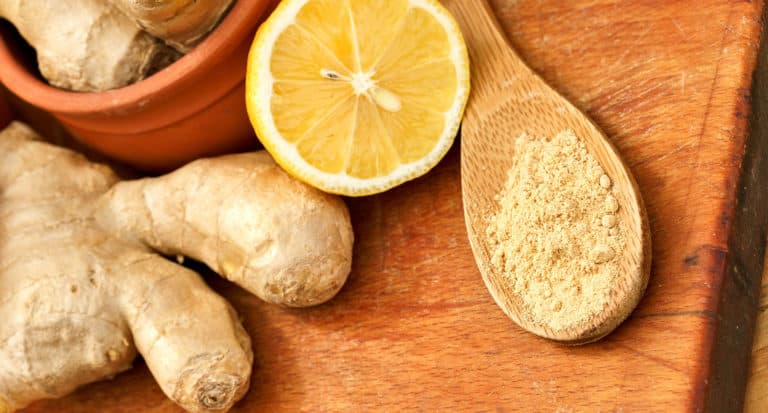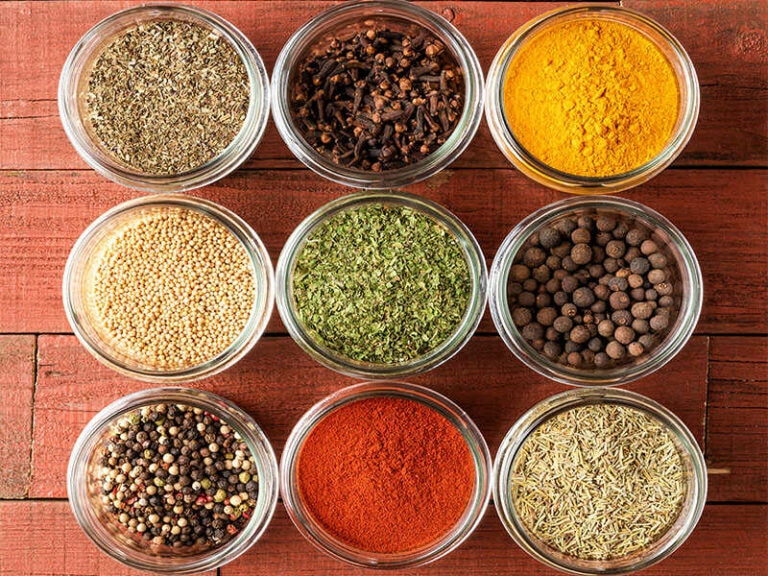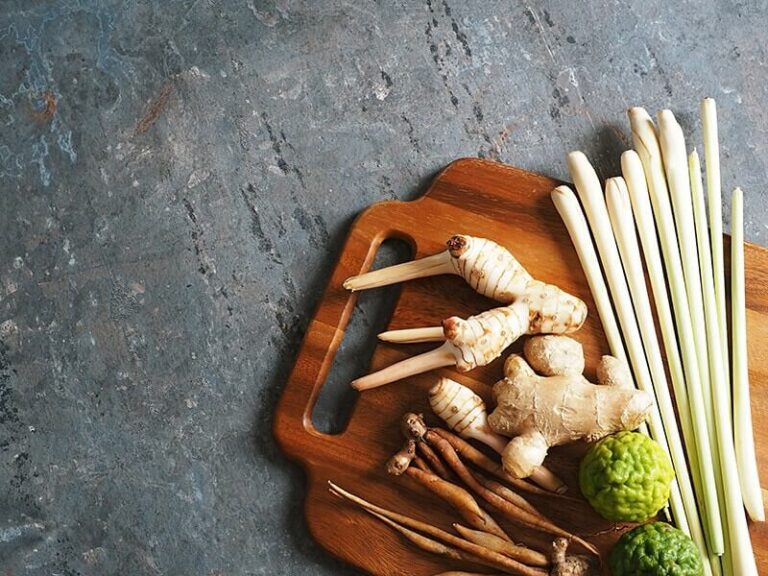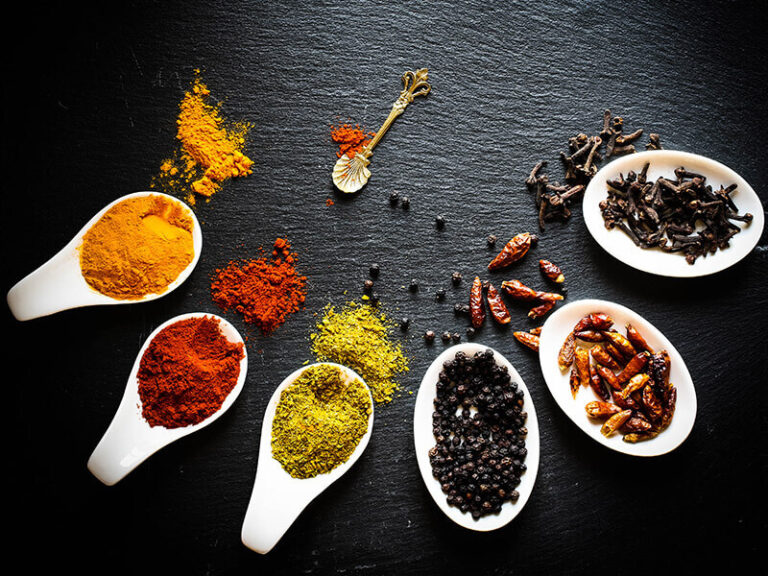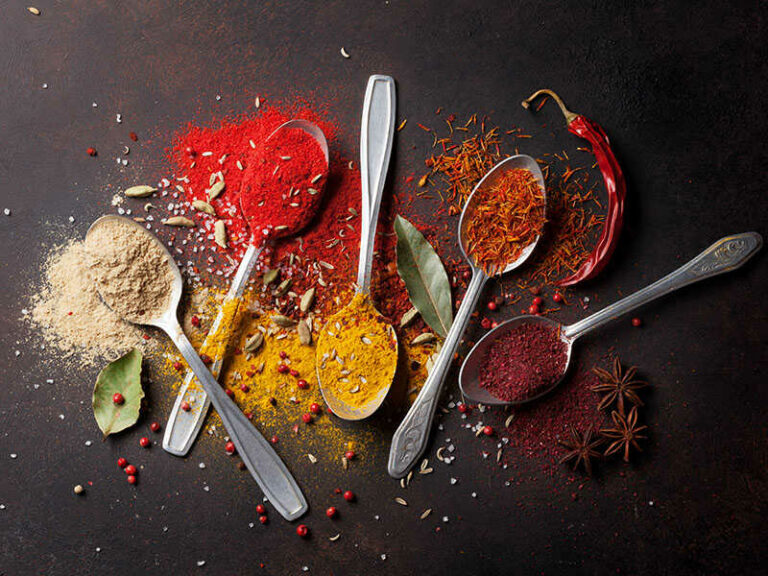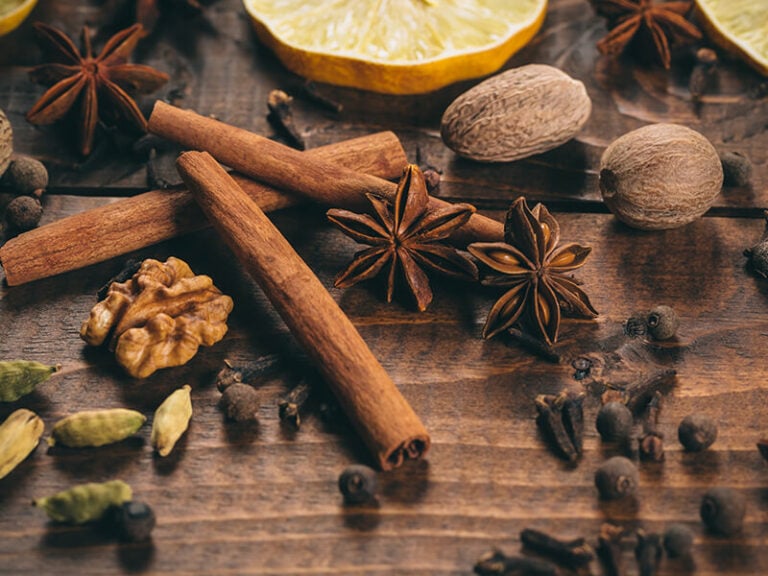Nutmeg vs. cinnamon is not painful to recognize when you see its original form; however, if everything is super easy like that, you will not come here, right? No matter what form they are, I will show the top-hole features, and you can deal with this task in a blink.
Not only that, I will provide you with a few tips to help you categorize other warm spices correctly. These ingredients cannot challenge you anymore. You chose the right plane, let’s land at your wish spots.
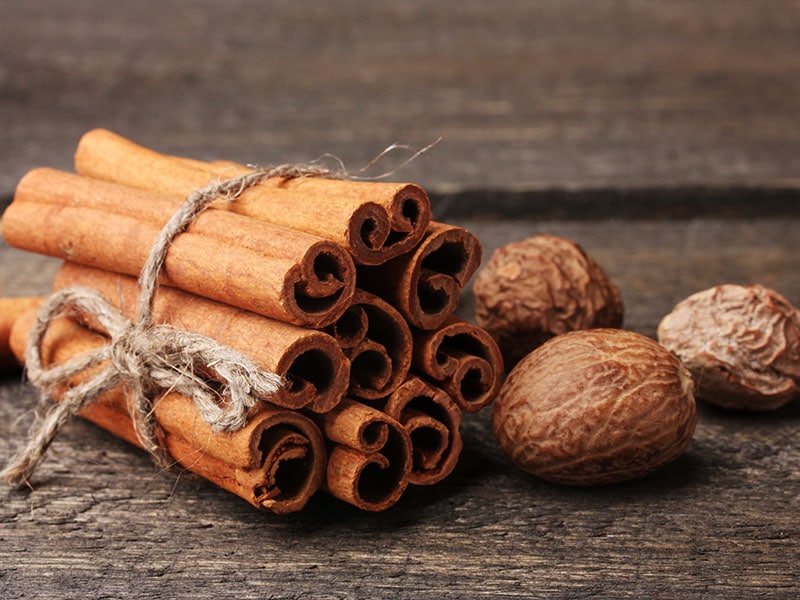
Check-In Nutmeg And Cinnamon Aspects
Before the plane takes off, you need to know some basic information about the two spices. Nutmeg and cinnamon have their own characteristics, and you will explore them right after these words.
Nutmeg
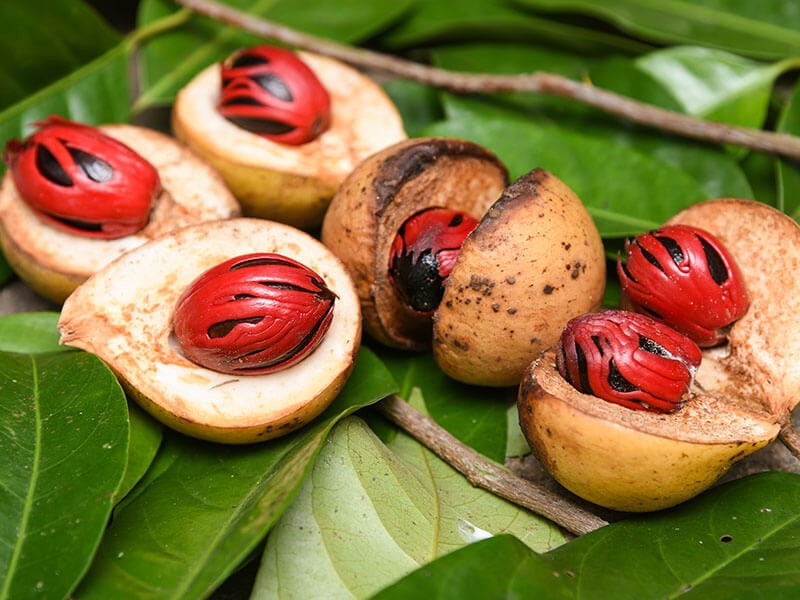
Nutmeg results from the nutmeg tree; it is quite obvious, isn’t it? This tree belongs to a dark-leaved evergreen family – Myristica fragrans (1). This tree is also known as true nutmeg or fragrant nutmeg, and its birthplace is Indonesia. Unlike other trees that can only produce 1 spice, a nutmeg tree offers you 2 spices, including nutmeg and mace.
Mace is the exterior that covers nutmeg seed. The mace has a red color with a unique shape. You cannot use fresh nutmeg to season your recipes, and it must be dried gradually under the sunlight. Normally, people will sell mace and nutmeg separately, and you can get it in whole or ground form.
There is one fascinating story about nutmeg. In the 1st century A.D., people used to use nutmeg as a currency to trade goods due to its high price. It was so valuable that the Dutch started a war to monopolize the nutmeg trade. The outcome of it was really terrible as the war was finished by a massacre. However, it is the past; now, you can buy it more easily.
Let’s listen to a master chef tell you a story about nutmeg and mace.
Cinnamon
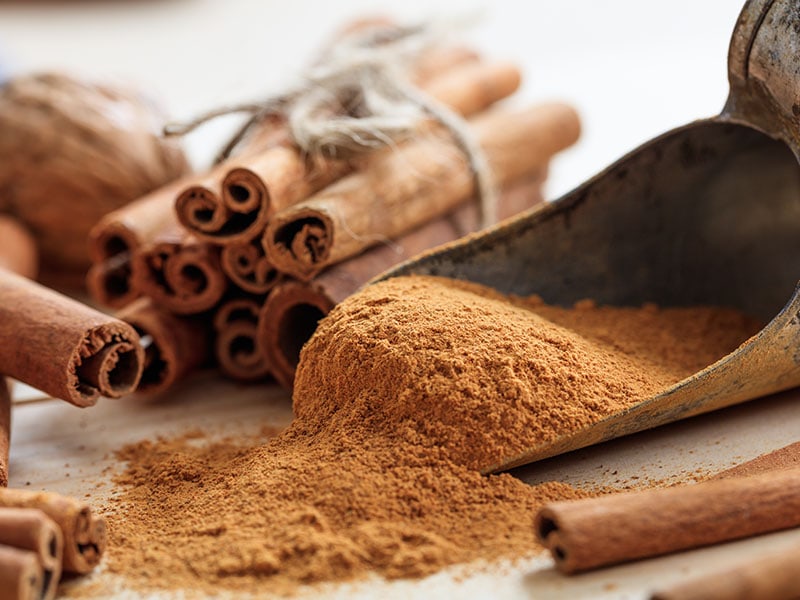
Like nutmeg, cinnamon is also a fall seasoning. Why did I say that? When the fall and winter are coming to town, you can quickly smell these two or enjoy various fall desserts containing cinnamon or nutmeg to warm up your body. Cinnamon has been a familiar spice since the old days.
Cinnamon is native to Southeast Asia, but the authentic cinnamon is from Sri Lanka (2); the Portuguese explored that and gained the cinnamon trade. After that, the Dutch and the British controlled it, respectively.
You can choose various types of cinnamon when standing in front of spice shelves. No matter what kind of cinnamon you pick, they all are gotten from the inner bark of different kinds of the cinnamon tree. You can select the ground form or curled sticks to add to your dishes.
Jump Into The Core – Nutmeg And Cinnamon Comparison
It’s time to take off your plane, wear your seatbelt, and I will take you to your desired areas. You will never be confused when losing the label of 2 spices as you can discriminate between them.
Varieties
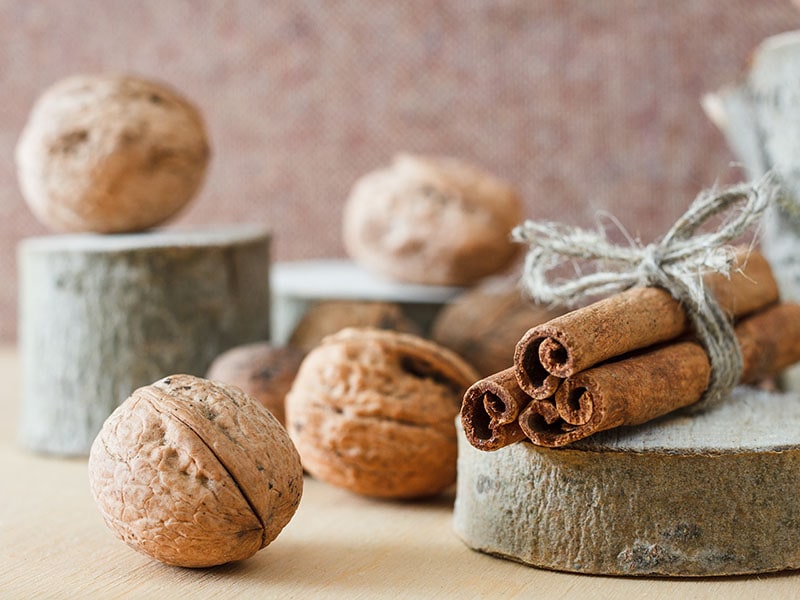
I’m sure you will be surprised if you know that there is more than 1 nutmeg and cinnamon variety. However, a few types among them can be used as a spice. Are you excited? I will introduce you to another type of nutmeg that is California nutmeg.
This tree also provides you with nutmeg seed looking quite similar to the real one; however, you cannot use it for cooking dishes as it doesn’t offer you the special flavor of nutmeg. This spice isn’t a close relative of fragrant nutmeg.
Unlike nutmeg, almost all kinds of cinnamon are edible. In North America, the cinnamon you use is actually cassia, or you can call it Chinese cinnamon. Its botanical name is the Cinnamomum aromaticum tree. You can find these plants in Southern Bangladesh, China, India, and more.
In fact, Indonesia and China are the 2 kings in producing cinnamon. Over half of cinnamon output in the world is from these countries. If you are hunting for “more authentic cinnamon”, you can pick an item labeled Ceylon cinnamon.
The hometown of this spice is from Sri Lanka (its old name was Ceylone). Moreover, many places have suitable conditions to grow this tree: the Southern state of Kerala in India, Brazil, Vietnam, Madagascar, and more.
Sometimes you will catch other cinnamon, such as a relative of Ceylon cinnamon (Cinnamon aromaticum, Saigon cinnamon, Indonesian cinnamon, and other types. Don’t forget to read the information on the packaging before paying for cinnamon.
The word “cinnamon” can be pointed to both real cinnamon and cassia in the US market, whereas producers have to write the exact name of the spice. Although there aren’t too many significant differences between them, you still check carefully to avoid wasting money on undesired products.
Are you curious about the differences between true cinnamon and cassia?
Drying Time
Since they are not the same spice or don’t come from one tree, their drying time is different, too. Drying will help you preserve these spices easily. The nutmeg needs to be dried under the sunlight within 6-8 weeks.
The moisture in these seeds will evaporate gradually, and the inner seeds will shrink away from the peel – mace. Stop! They are not the final results. You have to shake the seeds until you hear the rattle sound, which means the kernels are ready to take out of the shell. You need to hit the shell carefully to avoid breaking apart the true seeds.
The drying time of cinnamon is shorter than nutmeg. After you curl up the cinnamon into scroll-like forms. You need to place them in the shade in the first stage to protect them from warping. It only takes you 4-5 days to get rid of most of the moisture.
In the last stage, you need to roll these quills on a board to fix their form and place them under the light sunlight to dry them completely. If you live in humid climates, you have to call the help of a mechanical dryer to prevent mold from forming.
Appearance
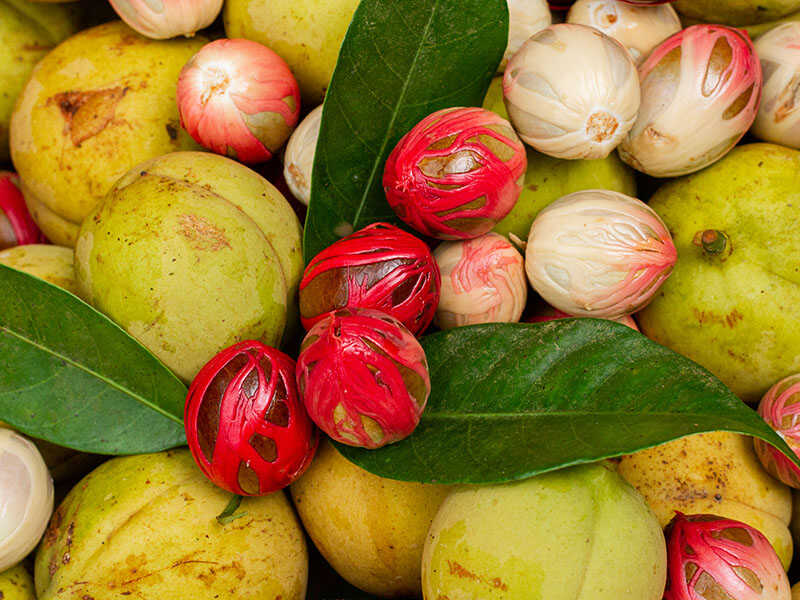
You should check the appearance of fresh nutmeg cautiously since it looks like an apricot with shiny yellow peel, and its size is approximately the size of an apricot pit. When you separate the fruit, you can see seeds with mace inside.
The dried nutmeg has an oval shape with grayish-brown color and furrowed surfaces. You can find it quite alike to egg-shaped with 0.81-1.18 inches in length, 0.59-0.71 inches in width, and weighing about 5-10g per seed. You can imagine nutmeg’s appearance is a hybrid between walnut and an almond.
The color of cinnamon ranges from light brown to pale tan uniformly. After drying, producers will conveniently divide it into smaller pieces from 2-4 inches for sale. As you know, there are many types of cinnamon, and the most common ones are Ceylon and Chinese.
I will show you how to take them apart. The Ceylon is relatively papery and thin, while the other is thicker, robust, and in a larger size. The true cinnamon is quite semi-soft and paler in color compared to cassia. It is composed of a lot of thin layers of bark instead of a single coiled strip of bark.
Let’s see how farmers collect cinnamon.
Form
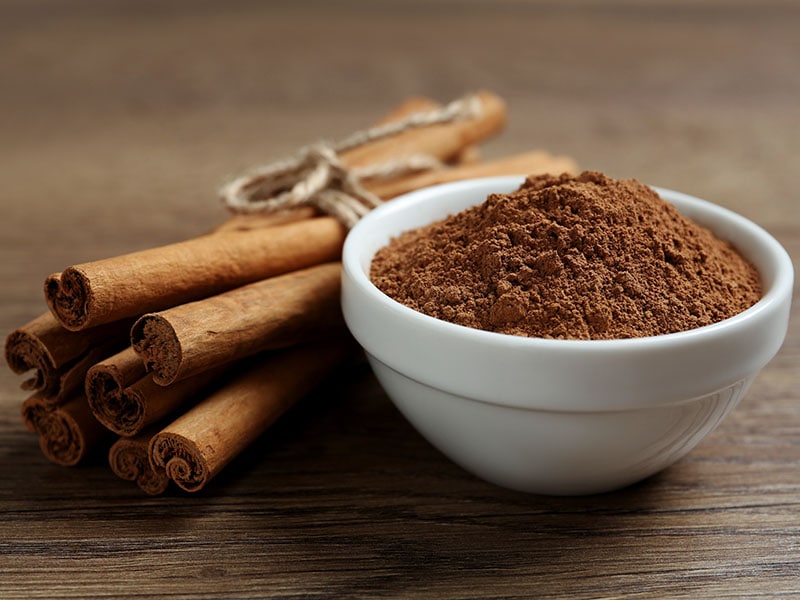
Both nutmeg and cinnamon can be found in ground form. This is also the most popular form you can find in the supermarket. In addition, you can purchase the whole seed for nutmeg and strips for cinnamon (quills).
Each form will have its advantages and disadvantages. The ground form is more convenient to access when you are making attractive and delightful cookies for the fall, but you cannot maintain its quality for a long time like the whole form. However, you should not expect the full flavor of them when using this dusty texture, especially for cinnamon.
If you use a quill of cinnamon, it will infuse flavor to your dishes delicately. The whole seed of nutmeg cannot do this task as well as cinnamon; thus, I recommend using a ground form instead.
Don’t be confused with the previous words, I suggest you buy whole seed and grate it at the moment you need it to ensure the flavor is always fresh and packs perfect flavor.
Flavor And Aroma
The different flavors of nutmeg and cinnamon are the most expected section, right? I will not let you wait too long; I will explain right now.
Nutmeg
It’s quite hard to describe the true flavor of nutmeg seeds. But basically, it is quite subtle, and you can feel a sweetness after tasting it. Its aroma is special as well. For a better imagination, you can think of the scent of half-spoiled milk.
That means the scent of milk when it turns from sweet to gently sour and begins forming curdles, but it has not completely gone off. If you have sensitive senses, the flavor of nutmeg seems almost spicy and sometimes sour. Besides, nutmeg also has a nutty taste with a shadow of earthy.
If you ask me to compare nutmeg with mace, it’ll take a while. But basically, the seeds will be milder, sweeter, and more delicate than mace. Meanwhile, mace is somewhat spicier and is claimed to be a marriage of pepper and cinnamon flavor.
Cinnamon
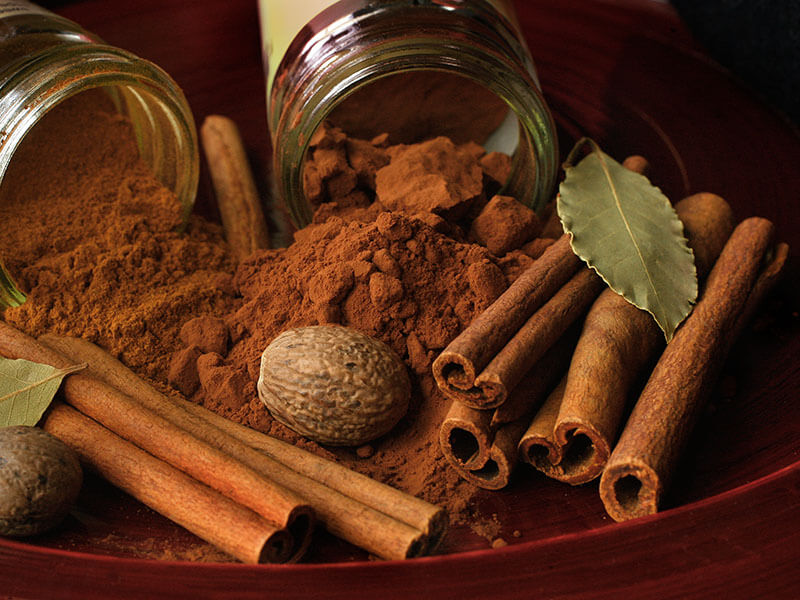
It’s a turn of cinnamon. Among various kinds of cinnamon, I will show you the palates of Ceylon and cassia (Chinese cinnamon). Ceylon or true cinnamon has more impressive flavors than its counterpart.
It has a delicate and nuanced taste. You will find it quite astringent and complex with distinctive sweetness. Its quality is resinous and woodsy, which makes it more outstanding than cassia.
Its subdued hint and gentle pungent will level up your dishes in a pinch. Cassia is more affordable than its sibling, but its flavor is less delicate and stronger. It is also considered a “bastard cinnamon”.
Among 3 spices, this type seems to be the spiciest ingredient with a slightly bitter and sharp floral scent. The others’ flavor is quite fine; you can try them if you have the chance. These are the separate features relating to cinnamon taste.
All cinnamon possesses a pleasant, warm, woody, and sweet flavor with a pungent scent. The cinnamaldehyde substance in essential oil and other 80% aromatic compounds creates cinnamon’s attractive taste and smell. You can quickly recognize it when you sniff it.
Although both nutmeg and cinnamon are warm spices, you can realize cinnamon is warmer and sweeter than nutmeg and can make your dishes spicier if you add a significant amount.
Popularity And Price
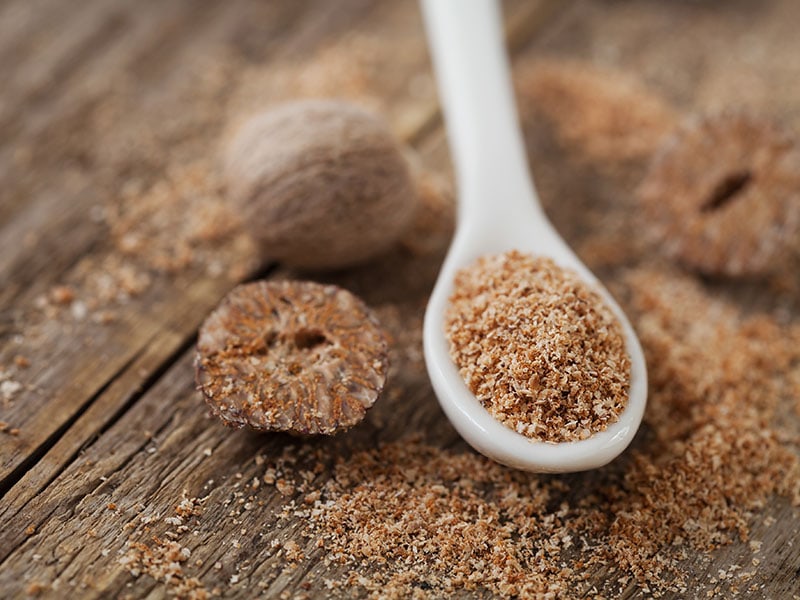
The production of nutmeg is not as much as cinnamon, and it takes a long time to harvest the first yield. Normally, you need to spend 7-9 years caring for and fertilizing it after planting to get these first seeds.
Moreover, you have to protect and supervise it for 20 years to help the trees reach full production. Therefore, it is not strange why it cost more to allow you to own these seeds.
On the contrary, the growing time of a cinnamon tree is shorter. You can collect the first cinnamon after 2 years. However, you should cut the stems at ground level. In the next few years, you can harvest more.
There are numerous types of cinnamon. Thus, finding and choosing the appropriate one is simpler without hurting your wallet.
Nutmeg is expensive, and Ceylon cinnamon is, too. Why does Ceylon cinnamon have such a high price?
Culinary Use
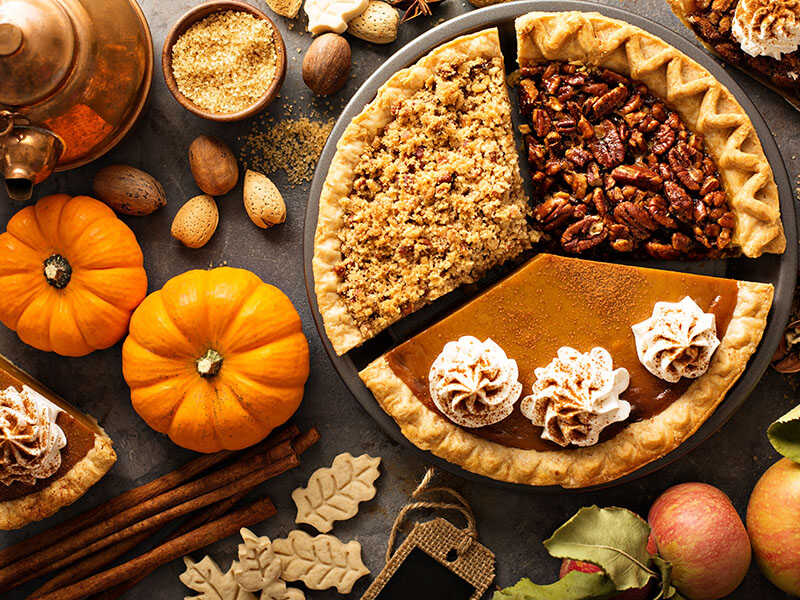
Both cinnamon and nutmeg go well with savory and sweet dishes. However, each type will shine its best in one particular culinary aspect.
Nutmeg
Nutmeg will be a star in hearty recipes, especially autumn-inspired side dish recipes, to add more fresh flavor to them.
Venison, scalloped potatoes, turkey, cream, or cheese-based and fish recipes will be more impressive if served with nutmeg as long as you don’t use it with a heavy hand since too much nutmeg will make your dishes too spicy to try.
If you use a whole seed, you can grate it a little bit right before cooking to preserve its full flavor. It works best for savory dishes doesn’t mean it makes your dessert worse. You can find nutmeg in diverse spice blends, including pumpkin pie spice to add to apple pie, pumpkin pie, cappuccino, eggnog, and more.
The scent of nutmeg is one of the specialties of the autumn season. Preparing a big stomach to enjoy the fall dishes is also a way to say hello to this the most wonderful time of the year.
Cinnamon
On the other hand, cinnamon is a perfect puzzle for sweet dishes: rice pudding, cookies, pumpkin-spiced drinks, and more. Each form of cinnamon will have dissimilar uses. The sticks are best served with liquid as they will infuse flavor gradually without overpowering them, such as custard sauce, poaching syrups, and more.
Meanwhile, ground cinnamon is excellent to add before cooking and baking recipes: apple tarts, coffee cake, and other dishes, as it can maintain flavor and aroma for a long time. Don’t forget to sprinkle cinnamon on hot drinks: latte, mocha, hot chocolate, and more to complement the fall touch.
You should prepare some nutmeg seeds in your pantry for these reasons.
Substitutes
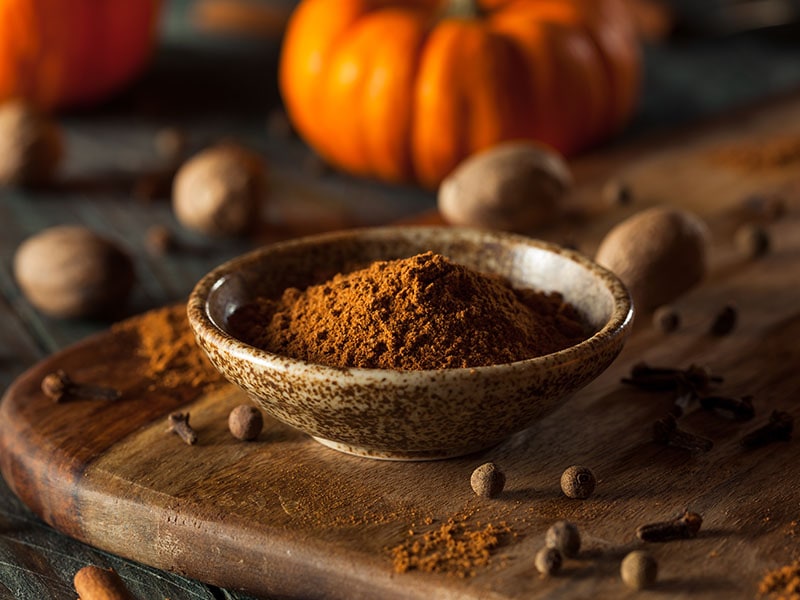
In case you are short of nutmeg and cinnamon, you can replace them with other potential choices that bring you a similar flavor.
Mace is the coat of nutmeg seeds, and it will be the most fitting substitute for nutmeg. Even if the mace is absent, you can swap nutmeg for other potential alternatives.
For recipes, you can use pumpkin pie spice, garam masala, ground cinnamon, ginger, allspice, or ground cloves. However, some alternatives are quite bolder than nutmeg, make sure you add one of them slowly and adjust to meet your taste.
If you don’t have cinnamon on hand, you can use allspice as it is one of the best-matched to replace cinnamon despite the different origins of the two.
Besides, nutmeg, ginger, cloves, star anise, cardamom, allspice, pumpkin pie spice, cinnamon extract, and cassia are good options. Tasting before serving dishes and adapting the substitutes to have a perfect and round flavor.
There are a lot of spices you can use to replace both nutmeg and cinnamon; you should stock them in your pantry and use them when needed. There is no substitute better than itself, don’t overuse these choices to avoid changing the dishes dramatically.
Combination
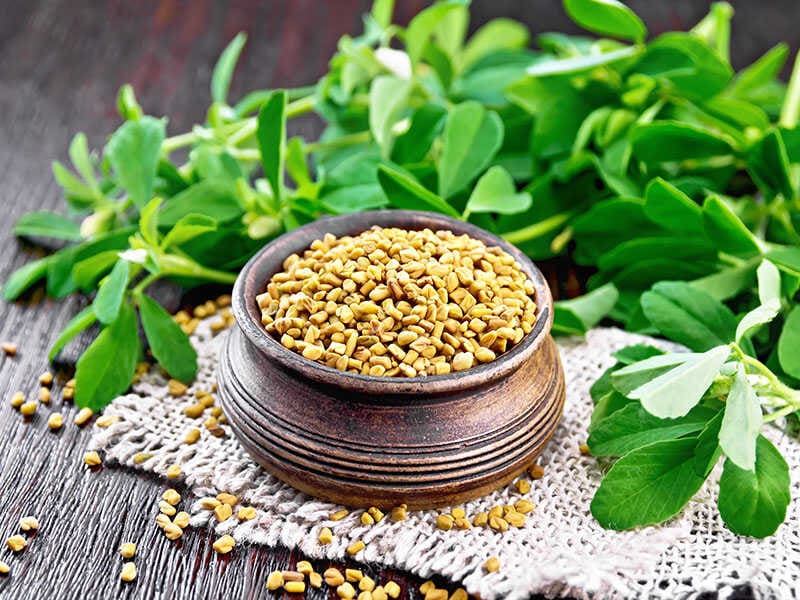
Nutmeg and cinnamon are bold spices; thus, you need to cautiously combine them with other ingredients to create a harmonious taste. Nutmeg is more subtle than cinnamon, so you can mix it with other gentle ingredients, including allspice, ginger, and cloves.
This marriage will offer you the intense background taste and bring out each other. Cinnamon is contrary to nutmeg, it is a strong spice, so you can add it to other powerful tastes.
Suppose you are a fan of Indian cuisine and have enjoyed authentic Indian flavors in side dishes. In that case, you will not be strange with the mixture of cinnamon and fenugreek in some dishes and even in curry powders.
Storage
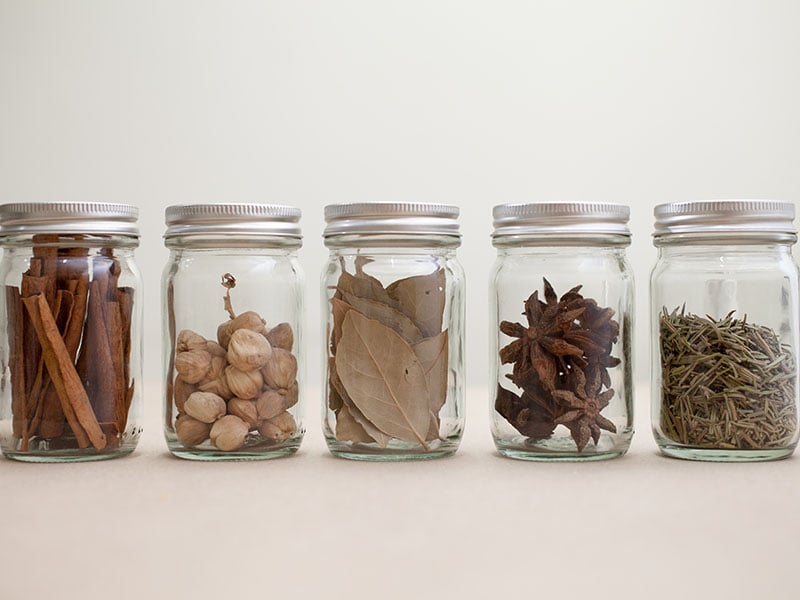
With proper storing conditions, you may be surprised at the shelf life of your nutmeg and cinnamon. Ground nutmeg can keep its quality for 2-3 years; however, you should use it up within 6 months to enjoy the peak taste.
You can use the whole nutmeg nearly forever if you keep them in air-sealed jars and away from heat and moisture – the two enemies of any spice containing nutmeg. Nevertheless, I recommend you to use it for about 4-5 years to ensure the perfect flavor.
As I mentioned, you should purchase the whole seeds and grate one when your dishes call for. They have an extended shelf life, and you will not waste more to purchase another batch.
You should buy a little ground cinnamon to prevent it from losing flavor if you place it in the pantry for a long time. One year is the maximum lifespan of this form.
The cinnamon sticks have a shorter life compared to the whole nutmeg; they can stay for 3-4 years. To get the best taste, you should pick quills and grind them with the grinder to use at the right cooking time. Like nutmeg, you should store cinnamon in an airtight jar and place it in a dark, cool place.
Health Benefits
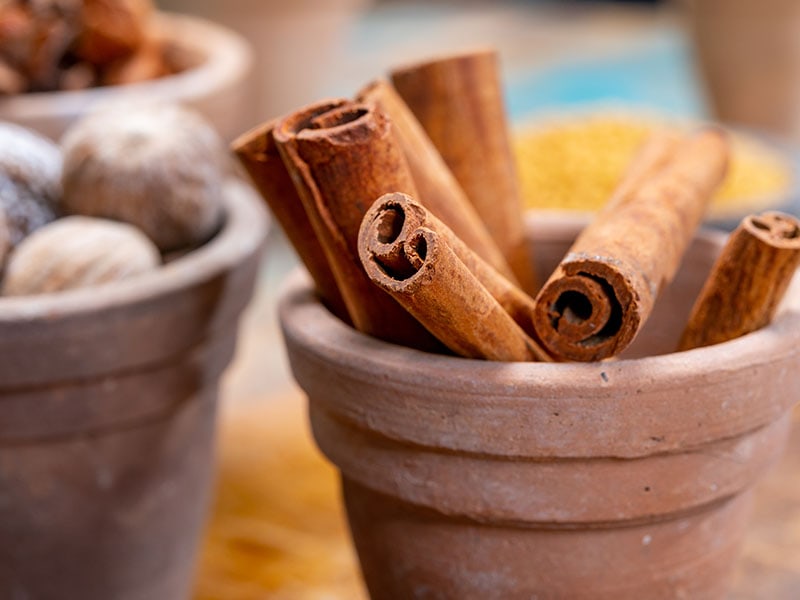
Let’s compare the nutritional value between nutmeg and cinnamon to have a general view of them. I will show you the comparison chart of ground form. Check it to have a closer look at these warm spices.
From the chart, you can see the differences between figures are quite noteworthy. Nutmeg is the winner when you compare the copper, magnesium, and phosphorus content. Cinnamon is also rich in potassium, calcium, fiber, and iron source.
The folate content in nutmeg is 10 times more than that in cinnamon. Both saturated fat and monounsaturated fat in cinnamon are much lower than nutmeg.
These ingredients are loaded with a lot of antioxidants; these substances will help your body fight against free radicals. Compared to 26 spices, cinnamon is a champion as it contains polyphenols.
You can consume them to decrease inflammation by protecting your body from infection and fixing damaged tissue thanks to anti-inflammatory properties. In addition, you will benefit from numerous substances in nutmeg and cinnamon; thus, don’t forget to enjoy dishes made with them, especially when the temperatures are cooling down.
You should see the video below:
FAQs
Finally, I have done the comparison tasks. Now it’s your turn. Can you tell me about your remaining wonder relating to this topic? Before commenting, you can refer to some questions below. Sit in place; your plane is going to land after a few minutes.
Nutmeg And Cinnamon – The Gifts For Cool And Windy Fall
Both nutmeg and cinnamon are great in their own way. You recommend storing them in your kitchen, and you can apply them whenever you want.
Are you satisfied with the detailed comparison I provided to you? Don’t be shy to leave some words in the comment box if you have any questions. I will reply to you as soon as possible. Like and share if you are interested in this topic. I will come back with more useful articles. Love you all!
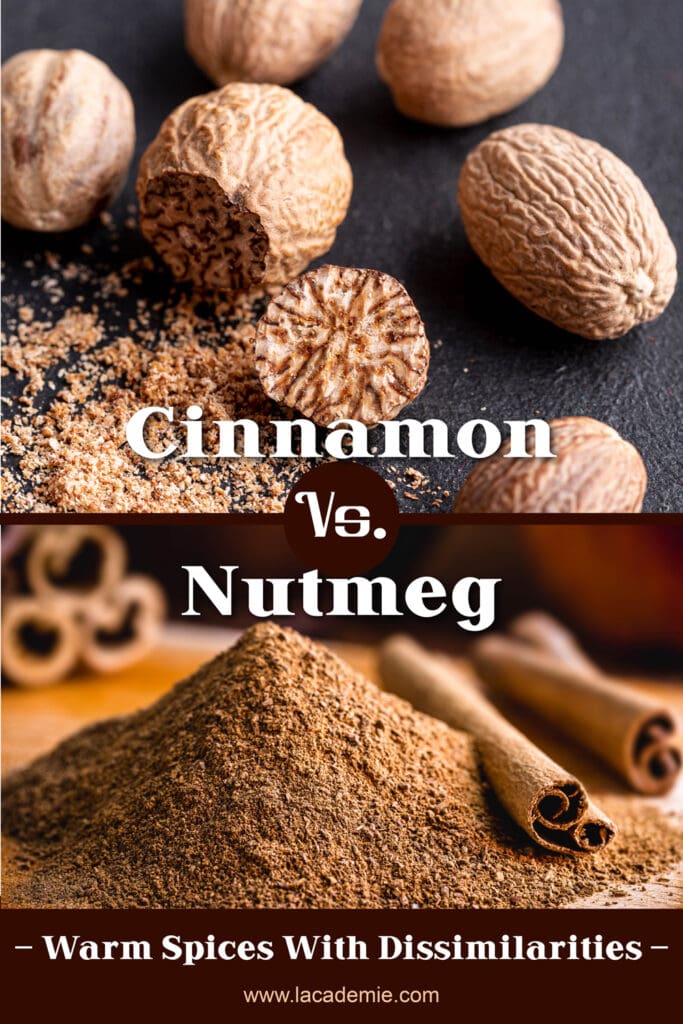
References:
- En.wikipedia.org. 2021. Nutmeg – Wikipedia.
- En.wikipedia.org. 2021. Cinnamon – Wikipedia.
- https://fdc.nal.usda.gov/fdc-app.html#/food-details/171326/nutrients
- https://fdc.nal.usda.gov/fdc-app.html#/food-details/171320/nutrients

